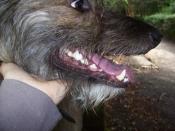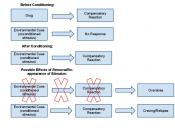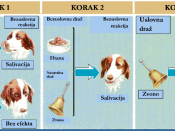Learning
Learning is a permanent change in behaviour caused by experience. The learner does not need to have the experience directly; we can also learn by observing others .
It is an ongoing process. Our knowledge of the world is continually being revised as we are exposed to new stimuli and receiving ongoing feedback that allows us to modify our behaviour when we find ourselves in a similar position again
Psychologists who have studied learning have developed advanced therories on the process of learning. Here we will discuss the two major approaches to learning; instrumental and classical conditioning.
Classical Conditioning
It occurs when a stimulus that elicits a response is paired with another stimulus that initially does not elicit a response on its own.
A Russian physiologist , Pavlov introduced classically conditioned learning by pairing a neutral stimulus ( a bell ) with a stimulus known to cause a salivation to dogs ( he squirted dry meat powder).
The powder was an unconditioned stimulus because it was capable of causing the response. Over time, the dog has learned to associate the bell with its meat powder and begin to salivate at the sound of the bell only. The drooling of these canine consumers because of a sound now has a linked to feeding time, was a conditioned response ( CR ).
This basic of classical conditioning applies to responses controlled by the autonomic and nervous systems. When these cues are consistently paired with a conditioned stimuli such as brand names, we as consumers may feel hungry, thirsty or aroused when later exposed to brand cues.
Conditioning effects are more likely to occur after the (CS) conditioned and unconditioned ( UCS ) stimuli have been paired a number of times. Repeated exposures increases the strength of stimulus-response associations and prevent the...


